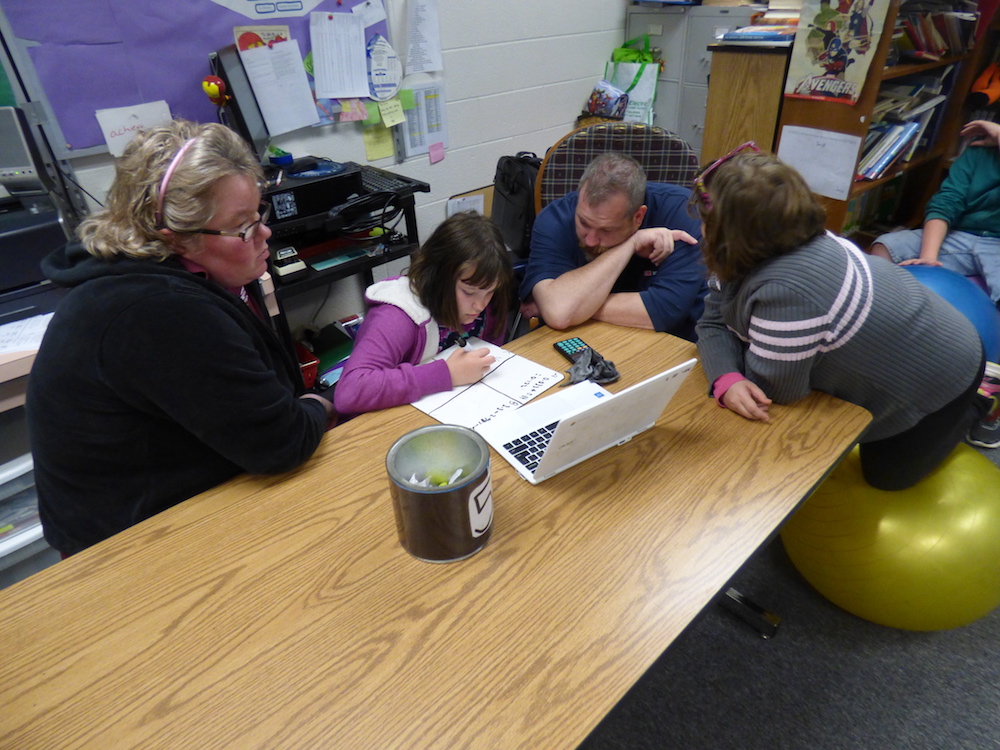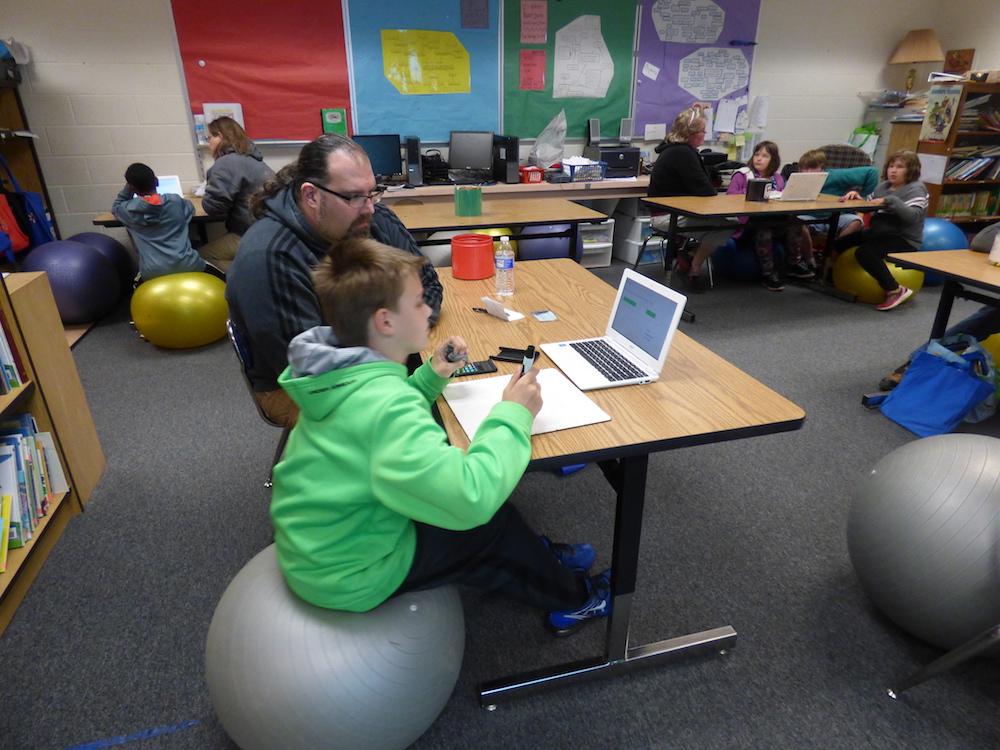Leading Successful Home-School Connection Nights
- May 10, 2016
- By Justin Birckbichler
In “6 Takeaways from Google Innovator Academy,” I alluded to the fact that part of our responsibilities as Innovators is to “improve the world of education through innovative methods.” What does this mean exactly? Each of us pitched, developed, and fine tuned an Innovation Project: a problem we wanted to fix and our solution.
I chose to develop an Innovation Project that focused on helping parents empower their children to be more successful in math. Let’s face it – math instruction has changed. We are moving away from a formulaic/algorithmic approach and toward a deeper understanding of number sense. If parents weren’t taught these methods when they were students themselves, chances are they may become frustrated when tasked with helping their children. With my project I wanted to upend this aspect of the parent-student relationship within these families’ home-lives. Below are the two versions of my home-school connection nights. I think you’ll agree that version 2.0 proved to be more effective in empowering students their learning.
Prototype 1.0: Home-School Connection Nights

The origins of my Innovation Project stem from an initiative I began in 2015 called Home-School Connection Nights (HSCNs.) This idea was derived from one of educator Ron Clark’s books and brought the parents into the school in the evening to learn from me. Essentially, I would teach the students during the day and the parents in the evening. I worked modeled examples of math and reading concepts, had them practice math problems, fielded questions, and provided resources. Parents enjoyed this concept and I saw gains in students whose parents attended regularly.
I wanted to expand this concept for my Innovator Project. I had an epiphany when Jay Atwood guided us to “find our hedgehogs” (a concept that I wrote about in 6 Takeaways from the Google Educator Academy). I realized that above all things, I am passionate about empowering students to be leaders of their own learning. I realized that while the HSCNs were developed to benefit the students, they omitted the students from the equation. The parents, students, and I were never in the same room learning together.
Prototype 2.0: Home + School = Success
In my revision of Home School Connection Nights, the evenings have taken on a new layer and a new title. The official title of my Innovator Project is Home + School = Success (HSS). Now, the students attend the workshops with the parents and they take the lead. I act as a facilitator, while the student is the teacher and the parent is the learner. I designed a Google Slidedeck that provided math questions and answers. It was the students’ jobs to explain and model to their parents why that answer was correct.

As I walked around, I witnessed many wonderful things happening. I saw students teaching their parents a new way to approach a problem, and parents reciprocating with the “old school way.” In my mind, an extra strategy can always benefit students.
Even more importantly, I saw students develop speaking and leadership skills. Students who are normally reserved in class were expertly leading their parents through complex problems. Strangely, students who answered the type of question wrong on various assessments explained and answered the same type of question correctly to their parents.
I also got to see something that is often missing from the school experience: the parent-student dynamic. Often, parents will say, “Oh he’s nothing like this at home” (in both good and bad ways) but we generally have no way of knowing this. The HSS allowed me to see this dynamic in action. I saw kids and parents laughing and learning together, and also getting frustrated when something didn’t add up. It gave me an inner look into the workings of how working at home might be, which gave me more to think about as I designed lesson plans.
I surveyed both groups at the end of the evening. Nearly all the students enjoyed the experience and said they would do another. Similarly, the parents also enjoyed the evening, with most indicating they preferred this format to the teacher-led HSCN. The parents said it helped them glean a deeper understanding of how their students learn and even helped them brush up on their own math skills.
Prototype 3.0?

With one HSS completed, I’m pondering where to go from here. First and foremost, I would love to expand the program to include more families. Finding a time and date that works for every family is always difficult, with all the extracurriculars families participate in and with other children at home.
I’d also like to implement some gamification to the events. I think it would be more fun for them to work together to solve a mystery or problem through using the math concepts.
Finally, I don’t know if all elements of the HSCN need to be scrapped entirely. I feel it’s beneficial for there to be some adults-only evenings, to share data or preview new information. A blend of both the HSCN and HSS may be a wise move.
Either way, parents need to be empowered. With our help, we can take student success to new heights.